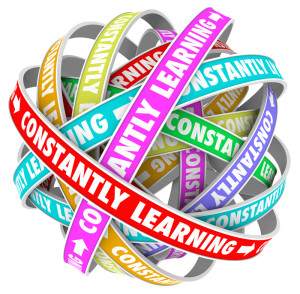The start of a new year is often a time to establish or renew professional and personal goals. There are common myths that it takes 21 days to form a new habit though researchers who have studied this say it  could take from 2 to 8 months to build a new behavior into your life. The end of January marks the first 30 days of the new year. I’m not going to ask how you are doing with your gym goals and whether you are on the road to changing your behaviors about regular workouts. Rather, I’ll ask you if you have a professional development goal for this year.
could take from 2 to 8 months to build a new behavior into your life. The end of January marks the first 30 days of the new year. I’m not going to ask how you are doing with your gym goals and whether you are on the road to changing your behaviors about regular workouts. Rather, I’ll ask you if you have a professional development goal for this year.
With tight budgets and busy schedules, finding time to fulfill professional development goals can be challenging. You may or may not be able to get to a training program or conference. And finding time to read publications or electronic newsletters may be wishful thinking given how much work email and reading you already have to do.
I highly recommend the practice of listening to podcasts as part of your ongoing professional development and learning. You can even mix it in with your workout goal. Listening to a 20-30 minute podcast while working out, walking the dog, or on your daily commute is easy and it’s free!
I have subscribed to many different podcasts but my “go to” in order to learn from health IT industry influencers and keep up on industry news and analysis is “This Week in Health IT”, launched by Bill Russell two years ago. Bill has served on executive teams in healthcare, higher education and Fortune 500 consulting practices including serving as Chief Information Officer for St. Joseph Health, a 16 hospital $5 billion system, for nearly five years.
With his podcast series, Bill uses his extensive experience to help leaders, innovators and organizations share their stories in a conversational style to capture the wisdom of the industry and share it with his listeners.
After a successful year one of his weekly podcast, Bill listened to his audience and greatly expanded his offerings. Continue reading









